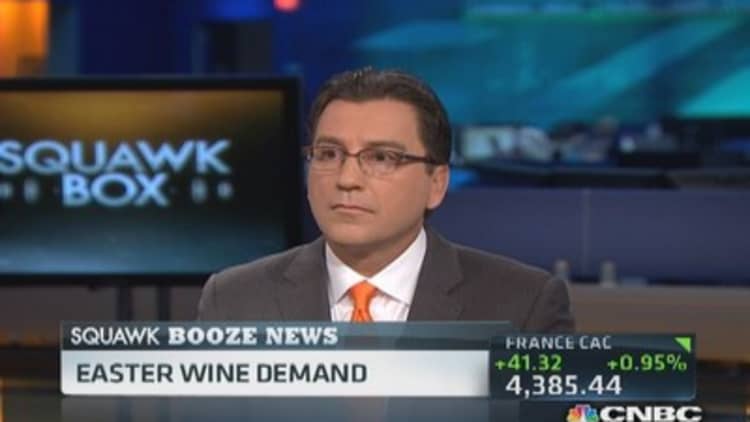The U.K. is ordering fewer and fewer bottles of Champagne as sparkling alternatives continued to lure consumers away from luxury bubbles.
In total, 136.6 million bottles of Champagne – which is produced under strict regulation within the Champagne appellation of France – were shipped around the world last year, according to the Champagne Bureau trade organization.
Some 30.8 million of these were shipped to Britain in 2013, the wine's biggest export market by far. But this marked a decrease in shipments -- a year-on-year drop of 5.1 percent by volume and 3.8 percent in terms of value.
It was the second year of a falling figures in Champagne shipments to Britain, raising concerns about the sparkling wine's ability to bounce back once an economic recovery takes hold.
Read More Will cheaper rivals keep stealing champagne's fizz?
The global economic downturn, which took hold in 2008, hit Champagne sales hard. According to market research firm Mintel's latest figures, sales fell from just under £900 million ($1.5 billion) in 2008 to beneath £600 million in 2013.
"Champagne is very sensitive to the economic cycle generally – it's always struggled in times of economic downturn," Richard Halstead, chief operating officer of research firm Wine Intelligence, told CNBC on Friday.

But he insisted that we were at the bottom of the cycle, and the Champagne market would "bounce back."
"The U.K. has finally exited recession and a growth in wages may well filter through," he said.
"There has been a shift towards sparkling wine, but it's quite clear that consumers differentiate between everyday celebrations – when Prosecco might suffice – and special occasions, where Champagne continues to own the moment."
In contrast to Champagne, sparkling-wine alternatives like Spain's Cava and Italy's Prosecco have received a welcome boost from the downturn.
Between 2008 and 2013, this sparkling wine segment grew by 45 percent in the U.K., according to Mintel. Its value is expected to have hit £770 million ($1.3 billion) last year, a 6 percent year-on-year rise.
Read MoreIs Now the Time to Invest in Fine Wine?
The growing popularity of Prosecco – made in the Conegliano and Valdobbiadene regions of Italy – has made headlines, but Mintel found the growth was in fact being driven by its Spanish rival.
Cava accounts for around 50 percent of off-the-shelf sparkling wine sales in Britain, whereas its Italian rivals – including Prosecco, Asti, Moscato and Frizzante – account for around a third.
Fizzing growth elsewhere
And it wasn't just British consumers that have shunned Champagne. Shipments to Germany, Italy, Switzerland and Spain – which are among the wine's top 10 export markets – fell in 2013.
Some countries, however, showed an increasing appetite for the premium fizz, with shipments up by 6.75 percent in Japan, 11.4 percent in Australia and 14.15 percent in Belgium.
Read MoreSobering thought: Low-alcohol wine set to boom?
"There are plenty of markets around the world where the idea of Champagne is really taking off," Wine Intelligence's Halstead added.
Champagne had always been a popular in Japan, he said, but a new generation of consumers were starting to drink it more regularly on special occasions.
Whereas in Australia, he said the sparkling wine market had "exploded." "It's from a relatively small base now, but is an incredibly important for Champagne," he said.
Australia is currently the sixth largest importer of Champagne, after Belgium, Japan, Germany, the U.S. and the U.K.
But U.K. Champagne Bureau director Francoise Peretti stressed: "The U.K. has been Champagne's number one export market for the past 18 years, and that is not about to change."


